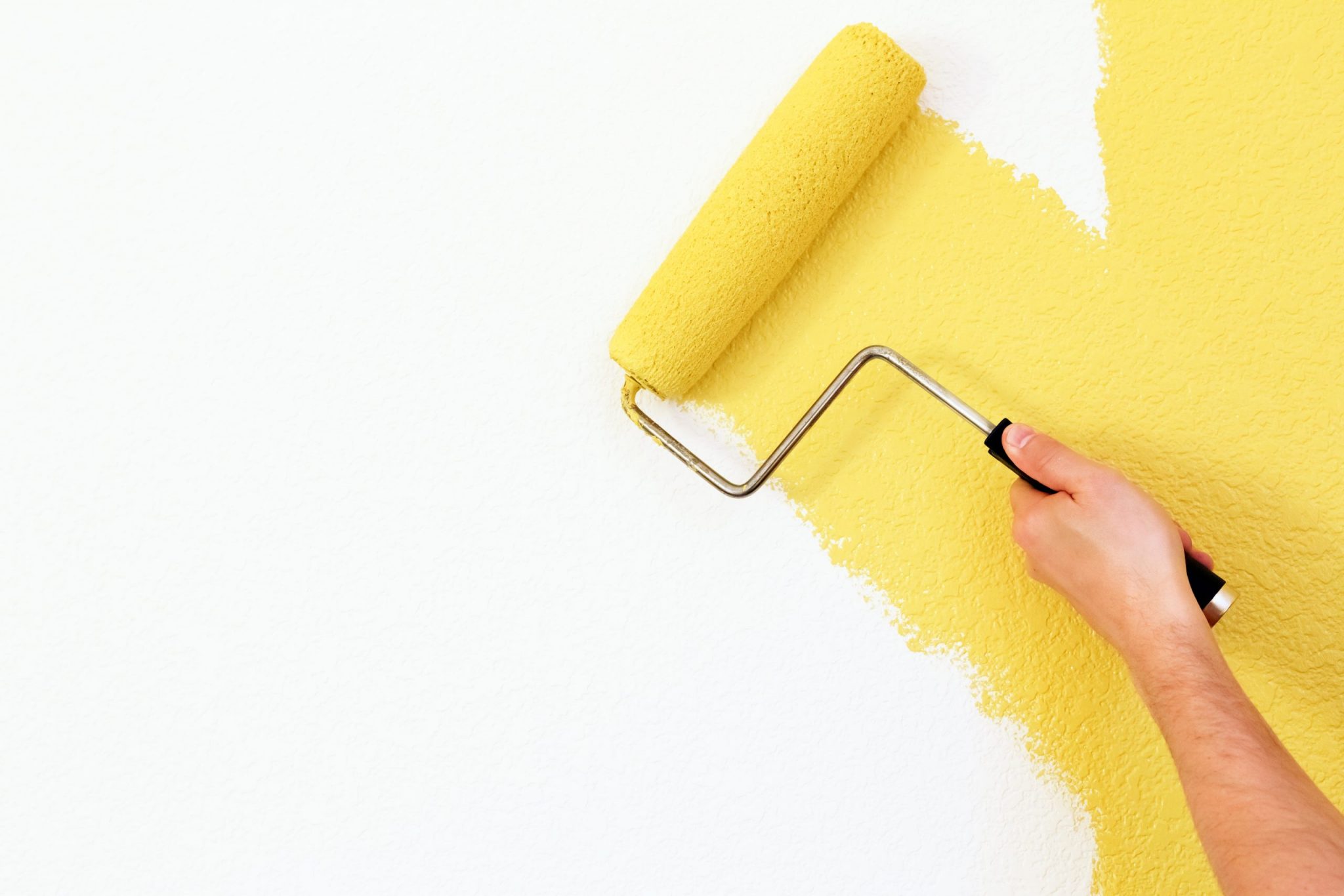If you’re considering a room makeover, sprucing up your home’s exterior, or just feel like you need a change in your life without going for a drastic new hairstyle… you might think paint. Simple enough, right? A quick trip to the hardware store, a look at color samples, some basic supplies and you are good to go. In reality, house painting is a more detailed and time-consuming job than most people realize. Sure, you all have or will paint a room yourselves at some point, but do you really know what you’re doing? Our partners at Heritage Custom Painting want to give you the knowledge and know-how to confidently set out on your next house painting adventure.
Preparation is key.
Listen, you are going to have to live with this paint job every day. Now is not the time to act impulsively by running out to buy 5 gallons of the first blue that catches your eye and slapping it on the walls. Take a giant step back from the feeling of needing these walls painted and pictures hung back up by Monday. First, take a deep breath. Second, sit down with a pen and paper and write out a plan. If you are painting multiple rooms, what is the priority? Will all the walls in a room be the same color? What about one color throughout the whole house? How does the trim look? Set realistic goals and timelines, think about colors you like and look up inspiration.
The more time you spend preparing the surface, the better off you’ll be. You don’t want to be admiring your completed work only to notice imperfections that should have been corrected at the start. It’s all you’ll be able to see from now on, trust us. Clean all surfaces thoroughly, properly repair nicks and nail holes, and sand areas that need it. How well was the room painted before this? Are there remnants of cheap rollers painted into the walls or blobs of paint on the baseboards or ceiling? You’ll need to correct those first. Remember, tape is your friend. Take the time to completely and properly tape off a room. Yes, it’s tedious and time-consuming. All of this will increase your prep and overall work time, but it will pay off in the end.
Use the right products.
We’ve all heard the saying, “You get what you pay for.” We also all know it’s obnoxiously true. As a DIYer, you are going to be paying full retail for your paints and materials. This might come with a little sticker shock, and you’ll be tempted to buy cheaper paint. After all, you are attempting to save money by painting yourself. Don’t do it. Again, you will have to look at and live with the quality of this paint job and will be spending your precious free time working on it. The quality and durability of the paint shows.
Read the labels of the products you use. How many of you religiously skip this step? Be honest. What will a can of paint or primer tell you that you don’t already know? Well, what surfaces they should be used on and drying times for starters. Both very important things! In your rush to complete the project, you don’t want to paint over primer or add a second coat before the suggested time. Speaking of, the paint/primer combos aren’t usually the way to go. They are advertised to be a time-saver, but you should research what type of primer is best for your specific project.
When you set out to purchase your supplies, think beyond only what will go on your walls. Obviously, brushes and rollers are important and you definitely shouldn’t skimp in that area either! You’ll want to research and purchase things like sanders, sprayers, tape, ladders, drop cloths, and more tape. The more you think ahead and prepare, the easier things will be. Fewer trips to the store is an added bonus too.
Protect yourself.
Listen to your body as you paint. This might sound odd, but truly, painting is more strenuous than you realize. Even if you’ve done it before, you forget. If it’s not something you do every day you are using different muscles than normal and you will feel it. If you’re painting ceilings, think about the strain that puts on your neck and back. Allow for adequate time to rest and take breaks whenever you feel you need them. Don’t try to power through. You’ll pay for it tomorrow and end up delaying the project longer. When you first write out your plan, you should think about and set aside enough time to complete the job. You shouldn’t need to rush through this. The quality of the work and your body will suffer.
As you paint, you will be exposed to strong chemicals in the air and on your skin. When you make your supply shopping list, add protective gloves and masks to the top. OPEN WINDOWS and make sure the area is well ventilated. If you are working in a small space with no windows, again, take breaks often.
If you’ve read to the end and this all just sounds utterly exhausting, we get it. We can help. Our number one DIY painting tip is: don’t. Sure, it’s doable, but you have to calculate how much you’ll end up paying in labor and time. If that’s math not worth doing, give Heritage Custom Painting a call.
This article was co-authored by F.C. Tucker Home Services & Heritage Custom Painting
![]()


Heritage Custom Painting – (317) 385-1951 – heritage-custompainting.com

